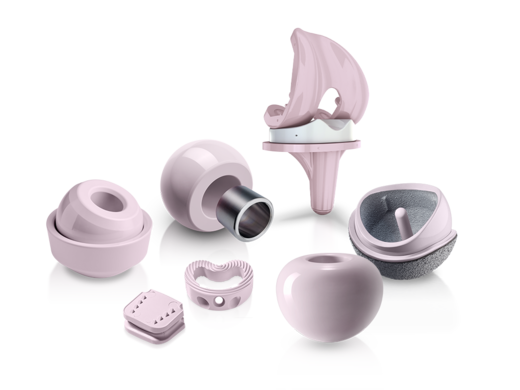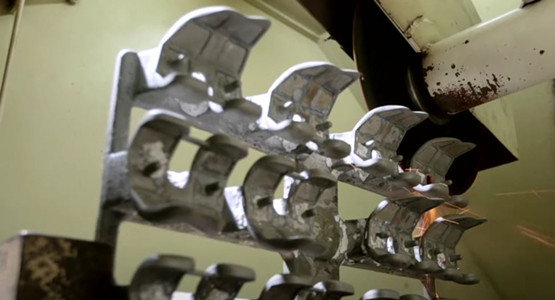Case of grinding Ceramic joint

Ceramic materials have excellent properties such as resistance to acid, alkali, salt corrosion, and high temperature resistance, and have a wide range of applications. However, ceramics are brittle materials with high hardness and brittleness. Their physical and mechanical properties (especially toughness and strength) are quite different from those of metal materials. They have poor processing performance and are difficult to process. When using ultra-precision cutting, grinding technology or traditional polishing technology to process ceramic workpieces, if the processing parameters are not reasonable, defects such as cracks and surface damage will occur on the surface of the processed workpiece.
Ceramic materials usually include engineering ceramics, glass, glass ceramics and bioceramics.
Engineering ceramics are divided into two categories: ordinary ceramics and special ceramics. Ordinary ceramics, also known as traditional ceramics, are products fired with natural silicates such as clay as the main raw material. Special ceramics are also called modern ceramics, new ceramics, and fine ceramics. They are commonly used non-silicate chemical raw materials or synthetic raw materials, such as oxide ceramics and non-oxide ceramics.
Oxide ceramics are materials mainly composed of metal oxides, such as alumina, zirconia, beryllium oxide, titanium oxide, etc.

Non-oxide ceramics consisting of ceramic materials based on carbon, nitrogen and silicon compounds, such as silicon nitride, silicon nitride, boron nitride (BN), aluminum nitride (AlN) and boron carbide, silicon carbide , boron carbide, cerium carbide, molybdenum carbide, niobium carbide, zirconium carbide, titanium carbide, vanadium carbide, tungsten carbide, tantalum carbide, etc.
Bioceramics refer to ceramic materials that are used directly in the human body or in biology, medicine, biochemistry, etc. related to the human body. Such as bioactive ceramics (hydroxyapatite, HA), biodegradable ceramics (β-tricalcium phosphate, β-TCP), composite bioceramics (sodium silicate glass reinforced HA, HA-ZrO2 composite bioceramics), coated bioceramics Ceramics, alumina bioceramic materials.
Ceramics have been used as implant materials for decades. Due to its excellent biocompatibility, chemical stability and high wear resistance, alumina-based ceramics successfully help people restore function and reduce pain.
Recently one of customer inquiry ceramic joint grinding, Moresuperhard provide coarse/fine grinding and polishing solutions for him, lets see the methods together:
Workpiece information:
Grinding materials: oxide ceramic materials (although the properties of various oxides are different, there is a preliminary unified solution first)
Processing contour: circumference; inner hole; complex profile
Grinding method:
1. Rough grinding method:
|
Rough grinding (Ra0.4-Ra0.5) |
Grinding wheel |
180# Resin diamond grinding wheel | Hardness | N |
|
240# Vitrified diamond grinding wheel |
Hardness |
L |
Choose a coarse grit resin diamond grinding wheel to improve grinding efficiency; a medium-hardness grinding wheel can achieve a balance between efficiency and life, and the elastic properties of the resin bond can effectively avoid edge chipping problems.
Ceramic bond has finer particle size and lower hardness than resin bond. Compared with resin bond, the efficiency will be improved. The service life will be reduced due to the influence of hardness, but it can optimize the material edge chipping problem.
2. Fine grinding method:
|
Fine grinding (Ra0.1-Ra0.2)
|
2000# Resin diamond grinding wheel | Hardness | N |
| 2000# Vitrified diamond grinding wheel | Hardness |
M |
The resin and vitrified bond have no impact on edge chipping (resin is better), and ceramic diamond grinding wheels are superior to resin diamond grinding wheels in terms of efficiency and lifespan.
3. Rough polishing:
|
Rough polishing (Ra0.4-Ra0.5) |
Grinding wheel |
2000# Resin diamond grinding wheel | Hardness | N |
|
2000# Vitrified diamond grinding wheel |
Hardness |
L |
Ceramic diamond grinding wheels are relatively more efficient.
4. Fine polishing
| Fine polishing (Ra0.01-Ra0.02) | Grinding wheel | 6000# Resin diamond grinding wheel | Hardness | M |
There are no obvious scratches on the surface with 6000# resin diamond grinding wheel, and it is close to a mirror surface or achieves a mirror effect. Vitrified bonded diamond grinding wheels are no longer an option for fine polishing. Vitrified diamond grinding wheels may scratch the surface of ceramic materials; resin bonded diamond grinding wheels have better polishing effects.
Summary:
There are two types of bonding agents for the above different processes, mainly resin bonding agents. Ceramic bonding agents can be used as alternatives in pursuit of efficiency.






